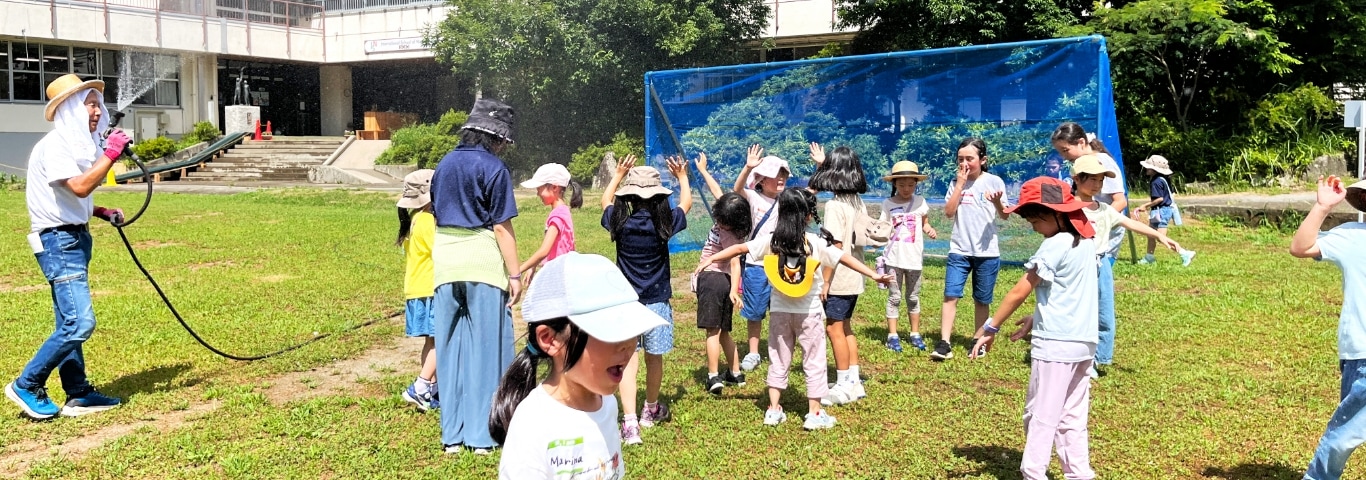Saturday Programmeでお世話になったある方から頂いた、ISNの生徒達へのコメントです。小学生のみならず、プレスクール生も多く参加していましたが 😄
「こんなに積極的に活動に参加してくれるなんて。」
「こんなに沢山の質問されたことがない。」
「日本語も英語もお上手ねー。」
この方のご家族のお子さんが、特別学級にいるお話を聞きました。
「家で問題集しているのを見ると、解けているのよ。分からなかったり、ついけいけないわけじゃない。」
「お話も上手にできるし、特別学級の話を聞いた時には本当にびっくりした。」
何らかの形で集団行動が苦手な子はいますし、それも個性です。私だって、何かをやらされる集団に属するくらいなら、自由に自分のしたいことをして、幸せな時間を過ごし、人に役に立ちたい。子どもたちの個性を一生懸命見れば見るほど、33人一斉に同じ目標、同じ活動、なんて無理です。トレーニングされた先生の数を増やして、少人数グループで一人一人にあった活動を提供する必要があります。
例えば、ISNの小学部2-5年生たちは、12個のタスク(畑の水やり、持ち帰りの本の交換、ジャーナル、ユニットの学びに関する作文など、算数、タイピング、プレゼンテーションの作成、新聞作り…)を1時間30分以内に終わらせる活動を、一人ひとりが自分で時間をマネージメントし、自分の責任で進めることが出来ます。先生が分刻みに声をかけなくても、機能するし、チームの声掛けもあります。学習内容だけでなく、多くのスキルが、時間をかけてでも確実に身に付くように工夫されています。
個性を重んじる、子供のための学習環境を整えるためには、個性の重要性を認める所からの意識改革だと思います。
初めて会った子ども達の、物事に前向きな雰囲気に気が付いてくださって、嬉しかったです。😊
********
These are the comments I have received by a guide in the park while taking care of ISN students during the Saturday program. Not only elementary school students, but also many preschool students were participating 😄
She said to our students;
“You are so active!”
“I have never had so many questions!”
“Both your Japanese and English skills are amazing!”
She told me her own grand-child is asked to a special class in her elementary school.
“…which is strange to me as My grand child does her homework at home alright and speaks fine.”
” I was really surprised when I heard them mention special classes.”
Some children have the personality type that doesn’t fit very well with the concept of collective behaviour. They want to do what they want to do freely, to have a happy time and to help others in their group as much as they can. The more you see the individuality of a child, the more you notice that doing that same activity or a task is impossible for a group of 33 people at once. We need to increase the number of trained teachers and provide activities that benefit each individual in a small group.
For example, the 2nd and 5th graders of ISN’s Upper Elementary Class have their basic twelve tasks (mathematics, typing, making presentations, making newspapers, gardening, exchanging library books, journals, unit learning). Within 1 hour and 30 minutes, each student needs to arrange their own time and proceed with their own responsibilities individually. Even if the teacher does not continually give instructions to every student, the system works.
In order to prepare a learning environment that values each child’s individuality, I think that the reform needs to start from the place where children learn, the school.
It was a pleasure to enjoy the positive atmosphere of the people meeting our children for the first time. 😊

